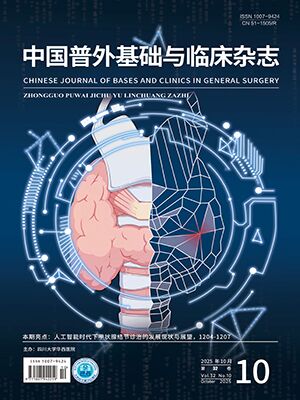Objective To summarize the mechanism of endoplasmic reticulum stress (ERS) in liver diseases. Method We sorted out and summarized the studies related to ERS and liver diseases in recent years. Results Endoplasmic reticulum plays important roles in protein folding, calcium ion storage, and lipid synthesis in cells. ERS will be induced when the number of misfolded/unfolded proteins in the endoplasmic reticulum increases or the calcium ion homeostasis is unbalanced. The endoplasmic reticulum regulates the unfolded protein response through three transmembrane receptor proteins to initiate corresponding pathways for restoring endoplasmic reticulum homeostasis. Prolonged stress can lead to metabolic disorders. Mild ERS can promote the progression of hepatocellular carcinoma, and continuous ERS will induce cell apoptosis and play an anti-tumor effect; ERS can promote lipid accumulation in non-alcoholic fatty liver disease and aggravate the progression of the disease; in hepatic ischemia reperfusion injury, ERS activation will aggravate liver damage. Meanwhile, ERS activation plays an important pathogenic role in the pathogenesis of drug-induced liver injury. Conclusion ERS plays a crucial regulatory role in the occurrence and development of liver-related diseases, providing a theoretical basis and new approach for targeted ERS therapy in liver diseases.
Citation:
WANG Liang, ZHOU Ziyi, WANG Chaoqun. Research progress on endoplasmic reticulum stress signaling pathway in liver diseases. CHINESE JOURNAL OF BASES AND CLINICS IN GENERAL SURGERY, 2025, 32(5): 638-645. doi: 10.7507/1007-9424.202412076
Copy
Copyright © the editorial department of CHINESE JOURNAL OF BASES AND CLINICS IN GENERAL SURGERY of West China Medical Publisher. All rights reserved
| 1. |
|
| 2. |
|
| 3. |
|
| 4. |
|
| 5. |
|
| 6. |
|
| 7. |
|
| 8. |
|
| 9. |
|
| 10. |
|
| 11. |
|
| 12. |
|
| 13. |
|
| 14. |
|
| 15. |
|
| 16. |
|
| 17. |
|
| 18. |
|
| 19. |
|
| 20. |
|
| 21. |
|
| 22. |
|
| 23. |
|
| 24. |
|
| 25. |
|
| 26. |
|
| 27. |
|
| 28. |
|
| 29. |
|
| 30. |
|
| 31. |
Tam AB, Roberts LS, Chandra V, et al. The UPR activator ATF6 responds to proteotoxic and lipotoxic stress by distinct mechanisms. Dev Cell, 2018, 46(3): 327-343. e7. doi: 10.1016/j.devcel.2018.04.023.
|
| 32. |
|
| 33. |
|
| 34. |
|
| 35. |
|
| 36. |
|
| 37. |
|
| 38. |
|
| 39. |
|
| 40. |
|
| 41. |
|
| 42. |
|
| 43. |
|
| 44. |
|
| 45. |
|
| 46. |
|
| 47. |
|
| 48. |
|
| 49. |
|
| 50. |
|
| 51. |
|
| 52. |
Shi S, Zhang H, Jiang P, et al. Inhibition of LPCAT3 exacerbates endoplasmic reticulum stress and HBV replication. Int Immunopharmacol, 2024, 143(Pt 2): 113337. doi: 10.1016/j.intimp.2024.113337.
|
| 53. |
|
| 54. |
|
| 55. |
|
| 56. |
|
| 57. |
|
| 58. |
|
| 59. |
|
| 60. |
|
| 61. |
|
| 62. |
|
| 63. |
|
| 64. |
|
| 65. |
|
| 66. |
|
| 67. |
|
- 1.
- 2.
- 3.
- 4.
- 5.
- 6.
- 7.
- 8.
- 9.
- 10.
- 11.
- 12.
- 13.
- 14.
- 15.
- 16.
- 17.
- 18.
- 19.
- 20.
- 21.
- 22.
- 23.
- 24.
- 25.
- 26.
- 27.
- 28.
- 29.
- 30.
- 31. Tam AB, Roberts LS, Chandra V, et al. The UPR activator ATF6 responds to proteotoxic and lipotoxic stress by distinct mechanisms. Dev Cell, 2018, 46(3): 327-343. e7. doi: 10.1016/j.devcel.2018.04.023.
- 32.
- 33.
- 34.
- 35.
- 36.
- 37.
- 38.
- 39.
- 40.
- 41.
- 42.
- 43.
- 44.
- 45.
- 46.
- 47.
- 48.
- 49.
- 50.
- 51.
- 52. Shi S, Zhang H, Jiang P, et al. Inhibition of LPCAT3 exacerbates endoplasmic reticulum stress and HBV replication. Int Immunopharmacol, 2024, 143(Pt 2): 113337. doi: 10.1016/j.intimp.2024.113337.
- 53.
- 54.
- 55.
- 56.
- 57.
- 58.
- 59.
- 60.
- 61.
- 62.
- 63.
- 64.
- 65.
- 66.
- 67.




